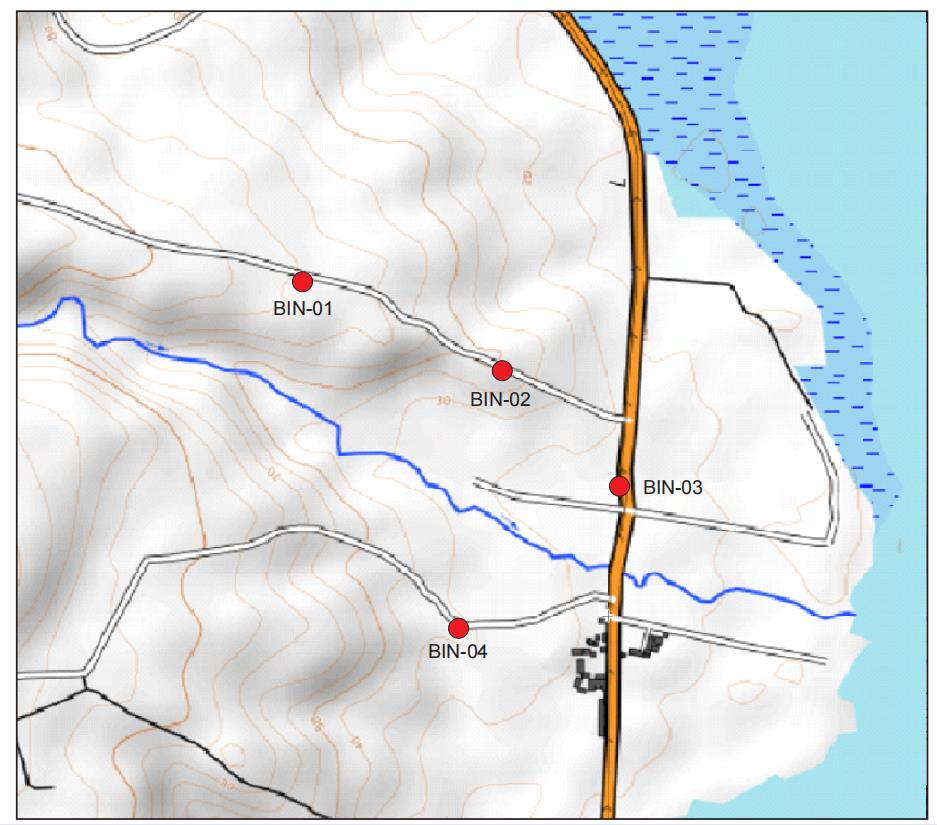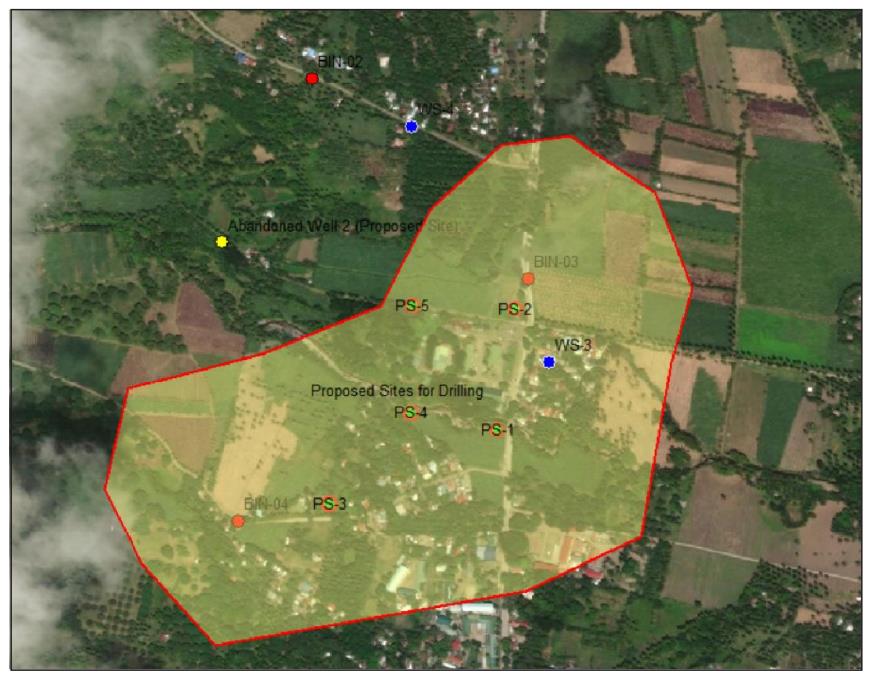
Barangay Tinaogan, Bindoy needs to drill water well at its jurisdiction and it also wants to know the best location to drill and up to what depth the drilling should be. In order to satisfy this requirement, Geo-i Consultancy was called to task to conduct a groundwater investigation and georesistivity survey under the auspices of the Municipality of Bindoy, Negros Oriental and Bigfoot Construction. In this project, all the potential water sources such as groundwater, surface water, and rainwater, were evaluated in terms of both quantity and quality. Groundwater source was given particular attention because of ease and simplicity of extraction. Whatever water source will be available for the project, storage and pumping are necessary and therefore proper location and sizing of the storage tanks and deep wells and pumps must be considered during the planning and construction phase.

High capacity groundwater well is still non-existent in Brgy. Tinaogan. Although there are some shallow wells and springs drilled to a few meters deep, groundwater is still virtually untapped as a water supply source.
There are several shallow wells drilled in Barangay Tinaogan but not all wells produce water. Three shallow wells were identified and sampled for in-situ water quality – total dissolved solids TDS). The well owned by Mr. Teodoro Zerna (WS-5) located near the proposed drill site by the provincial government has a total depth of 15 ft and a TDS of 126. The shallow well owned by Kalahi-NCDDP (WS-4) with total depth of 110ft has a TDS of 395ppm. Shallow well located at Paz Cancio (WS-3) residence has a TDS value of 271 ppm.
Spring water quality were also observed during the well inventory. Sample 1 (WS-1) with spring source originating from Cambinga, Tinaogan exhibits an excellent quality in terms of TDS of 122 ppm; sample was taken from the concrete water tank located near NORECO compound just beside the highway. Sample 2 taken from a tap in Upper Tinaogan (WS-2) which comes from Danao Spring exhibits excellent water quality in terms of TDS with 92 ppm. This spring source was reportedly become low in supply and scheduled rationing is being practiced in Upper Tinaogan to serve as many areas as possible.
This is the second stage of groundwater investigation. A total of four (4) Vertical Electrical Soundings (VES) were distributed at selected locations throughout the barangay, see Figure2. In the selection of the locations, the elevation and geology of the area was taken into consideration. Areas with high elevation are considered hard formation, and therefore characterized by difficult groundwater occurrence.
Areas that are gently sloping to low elevation are considered to have good potential for groundwater development. fter the georesistivity survey, the raw field data were analyzed andinterpreted utilizing a software specifically for the interpretation of the georesistivity field data.
We are looking at low resistivity values from about 10 to 100 ohm.m wherewater-bearing formation may be drilled to extract groundwater. However, the 11true discharge rate or flow rate of the well can only be determined after drilling and pump testing of the well.
From the interpretation, the true resistivity and thickness of the variouslithology (rock formation) in the area were estimated, and these are given in Figure 3 outlines the most favorable areas for deep well drilling.
Georesistivity is an excellent tool for groundwater exploration because it can detect the differences in resistivity of various rock formations at greater depth.
Rock formations with low resistivity in contrast with its surroundings and adjoining formations, both horizontally and vertically, indicates that there may be a favorable formation saturated with water, but of course depending on the hydrogeology of the area.

Figure 2. Location of VES Points

Figure 3. Proposed Sites for Deepwell Drilling
Lower Tinaogan has the most potential to find good quantity of groundwater as compared to Upper Tinaogan. Drilling may be possible to a depth of about 50m in Upper Tinaogan but drilling may be difficult because of the presence of large volcanic boulders.
Recommended sites for drilling are given in Figure 3. Drilling depth may be 100m.